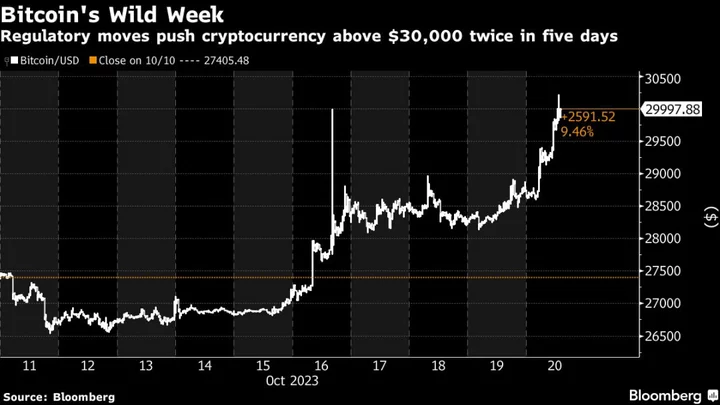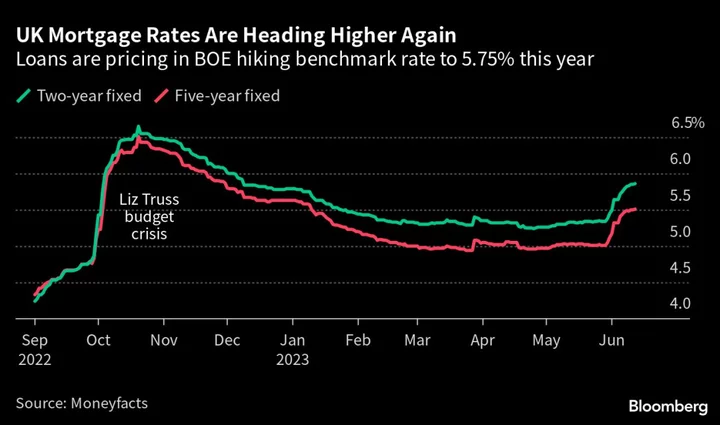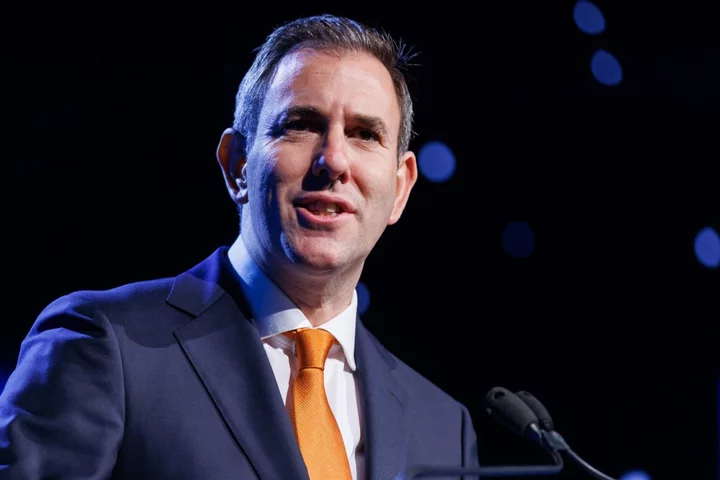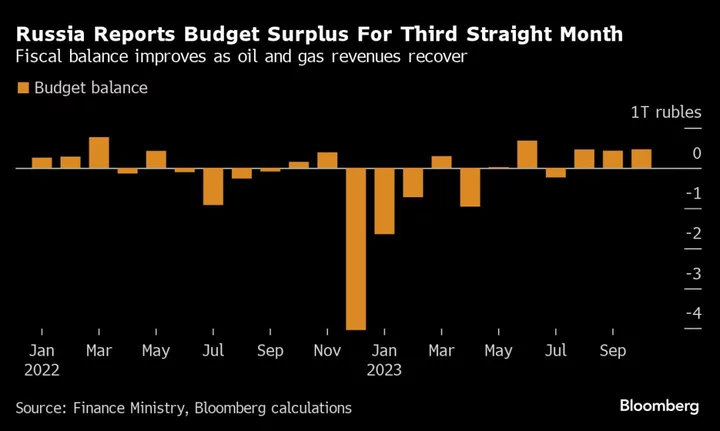UK wage growth slowed and vacancies continued to fall, further signs that the labor market is easing as the British economy flirts with recession.
Average earnings excluding bonuses rose 7.7% in the three months through September, compared with a revised 7.9% in the period through August, the Office for National Statistics said Tuesday. Private-sector regular pay growth slowed to 7.8% from 8.1%.
The figures will help reassure BOE policy makers that inflationary pressures in the once-red hot jobs market are subsiding. With the economy stagnating in the third quarter, businesses are becoming less willing to take on full-time staff and have more candidates to choose from.
Officials increasingly think they’re winning the battle to tame inflation, having raised interest rates from 0.1% to 5.25% in less than two years, and are signaling that further hikes are unlikely.
The pound rose after the stronger-than-expected jobs data, reversing an earlier decline. It traded as much as 0.1% stronger at $1.2288, set for a third day of gains.
However, the labor market remains tight by historical standards, and policymakers have stressed the need to keep policy in “restrictive” territory for an extended period. Wage growth is still well above levels compatible with the 2% inflation target. Markets are pricing in the first rate cut in August next year, a bet BOE Chief Economist Huw Pill appeared to endorse last week.
Crucial to the path for rates will be inflation figures for October due on Wednesday.
While the headline CPI rate is forecast to have slowed sharply due to cheaper energy bills, traders will focus on services inflation to gauge whether there has been any letup in underlying price pressure. A stronger-than-expected reading could see traders unwind rate cut wagers.
For the second month, the ONS produced experimental statistics on employment, unemployment and inactivity after falling response rates forced it to suspend its flagship Labor Force Survey.
The LFS will resume in December with a “transformed” LFS set to be rolled out in March. In the meantime, the BOE is likely to rely on its own suite of labor market indicators. These, the central bank reckons, show wages rising by about 7%, slightly less than official measures.
“Our labor market figures show a largely unchanged picture, with the proportions of people who are employed, unemployed or who are neither working nor looking for a job all little changed on the previous quarter,” ONS director of economic statistics Darren Morgan said. “With inflation easing in the latest quarter, real pay is now growing at its fastest rate for two years.”
--With assistance from Constantine Courcoulas.









